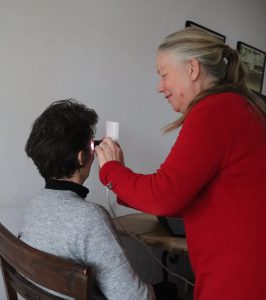The eyes are the mirror of the entire body.
Iridology is a diagnostic tool ; the patterns, colors, and other characteristics of the iris can reveal disturbances and potential deficiencies.
The iris is compared to an iris map, dividing it into different regions, each corresponding to a part of the human body. This allows us to determine whether certain organs or systems in the body are in good or poor condition. Iridology is always used in conjunction with a medical questionnaire/anamnesis and other diagnostic tools.
Iridology examines:
- Constitution: General overview of the client’s strengths and weaknesses in body and mind.
- Diathesis: the predisposition or susceptibility to developing certain diseases or manifestations thereof.
- Character: The client’s character can be seen in the eye structure.
- Iris signs : abnormalities of the radial tissue or abnormalities in colour (can be compared to a fingerprint), are related to the constitution and possible diathesis(es) of the client.
- Pupil distortions : Many people have pupils that are not perfectly round. Distortions and flattening are often associated with spinal disorders and psychological disturbances.
- Sclera : Blood vessels in the sclera (white of the eye) tell us something about the condition of the blood vessels in the entire body.
During a consultation, we take eye photographs with special equipment, which are then analyzed.
An iridology consultation can be part of a treatment.